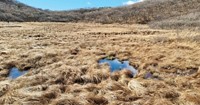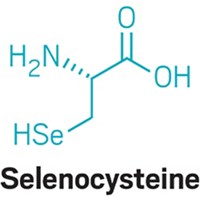Advertisement
Grab your lab coat. Let's get started
Welcome!
Welcome!
Create an account below to get 6 C&EN articles per month, receive newsletters and more - all free.
It seems this is your first time logging in online. Please enter the following information to continue.
As an ACS member you automatically get access to this site. All we need is few more details to create your reading experience.
Not you? Sign in with a different account.
Not you? Sign in with a different account.
ERROR 1
ERROR 1
ERROR 2
ERROR 2
ERROR 2
ERROR 2
ERROR 2
Password and Confirm password must match.
If you have an ACS member number, please enter it here so we can link this account to your membership. (optional)
ERROR 2
ACS values your privacy. By submitting your information, you are gaining access to C&EN and subscribing to our weekly newsletter. We use the information you provide to make your reading experience better, and we will never sell your data to third party members.
Biological Chemistry
Life and Depth
ACS Meeting News: Study hints at how deep-sea bacterium copes with high pressure in the ocean
by Amanda Yarnell
March 21, 2005
| A version of this story appeared in
Volume 83, Issue 12

Although oceans cover nearly three-quarters of Earth’s surface, little is known about how organisms living deep in the ocean cope with the pressures of their environment. At the American Chemical Society meeting in San Diego last week, Douglas H. Bartlett of Scripps Institution of Oceanography described the first genomic blueprint of an organism from the cold, deep ocean, which should shed light on how life can persist at great depths.
The deep-sea bacterium Photobacterium profundum is widely used as a model to study how organisms adapt to the high pressures of deep-ocean living. It was isolated from the Suluwesi Sea at a depth where pressures can reach 25 megapascals. Because P. profundum also can tolerate lower pressures, it is easy to grow and study in the lab, according to Bartlett. In San Diego, he reported the genomic sequence and protein expression profiles of this bacterium, work done in collaboration with Giorgio Valle at the University of Padova, in Italy (Science 2005, 307, 1459).
These studies "hint at how this organism copes with the pressures of living at depth," Bartlett told C&EN. For example, P. profundum contains two subtly different copies of certain housekeeping genes—;including those that encode proteins involved in cytochrome biosynthesis, ATP synthesis, and the cell's propulsion system. He hypothesizes that one copy might be optimized for use at low pressure and the other for use at high pressure. His genetic work has suggested that the bacterium may control which copy is expressed via specialized membrane-bound transcription factors that can sense pressure-induced changes in the lipid bilayer.
The deep-sea bacterium also appears to use alternative carbon sources at higher pressure, as evidenced by activation of enzymes that degrade chitin, pullulan, and cellulose"all relatively recalcitrant carbon sources—at high pressure. "This is consistent with what we expect deep-sea organisms might get in the way of food," Bartlett told C&EN.





Join the conversation
Contact the reporter
Submit a Letter to the Editor for publication
Engage with us on Twitter